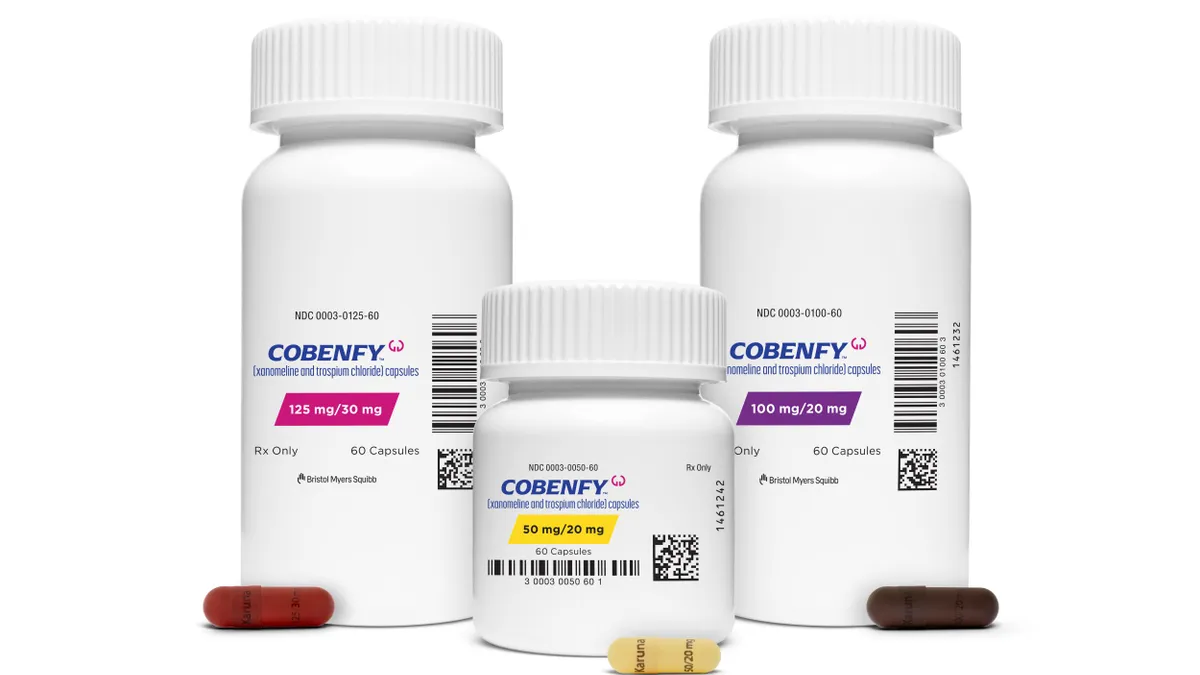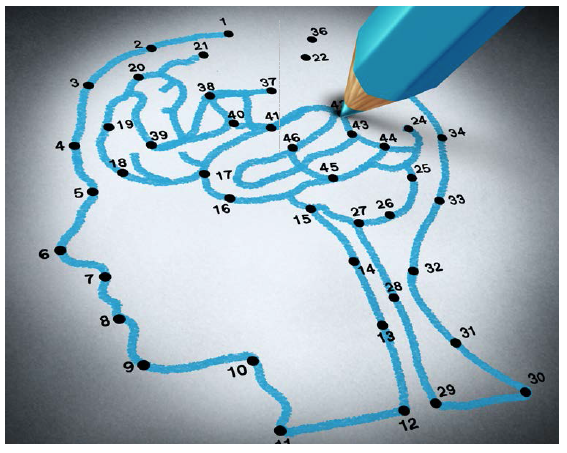 Neurological disorders consist of more than 600 conditions, impacting an estimated 50 million Americans every year. Although some are well known, many are rare disorders that affect a small number of patients who currently have access to few, if any, effective treatments.
Neurological disorders consist of more than 600 conditions, impacting an estimated 50 million Americans every year. Although some are well known, many are rare disorders that affect a small number of patients who currently have access to few, if any, effective treatments.
Research in the CNS area has been cyclical. Now there is an upward trend in research of the brain. Experts say CNS is now a vibrant space with increased research spending in neurodegenerative diseases, such as Alzheimer’s and Parkinson’s, and in neurodevelopment disorders such ADHD and autism.
Our experts at contract research organizations that conduct CNS research say this increased focus on CNS puts pressure on sponsors, especially in the area of site and patient recruitment.
Sponsors are increasingly interested in drugs for specific populations, says Rebecca Evans, Ph.D., global therapeutic area head for CNS, at Parexel.
“This interest impacts site selection, enrollment timelines, and the need to ensure that only the appropriate patients are enrolled before randomization," she says. “High rates of placebo response that invalidate efficacy outcomes continue to be a problem. Central ratings are likely to be increasingly used as one way to try to minimize this effect. CNS trials in Phase I-IV have  been growing more complex due to the need to incorporate various biomarkers, include appropriate patients, and minimize placebo responses."
been growing more complex due to the need to incorporate various biomarkers, include appropriate patients, and minimize placebo responses."
Increasing intensity of worldwide R&D will necessitate larger numbers of trials, which will translate into even bigger competition at the site level for patients and for investigators’ attention and capacity, says Dr. Anna Baran, chief medical officer, KCR.
“As in other areas, greater participation of patients in study design and control can be expected," she says. “In CNS, new animal models will be developed, 3D organotypic CNS models will be deployed, and novel biomarkers will be validated. Possibly, we might identify the origin of some CNS diseases as being autoimmunology, infectious, genetic etc., thus enabling completely different, and efficient treatment approaches."
CNS Research Challenges
Drugs that treat CNS diseases take more than a year longer to develop and are less than half as likely to obtain marketing approval than other drugs, according to a 2014 study by the Tufts Center for the Study of Drug Development. Mean clinical development time for CNS drugs approved for marketing in the United States from 1999 through 2013 was 12.8 months, or 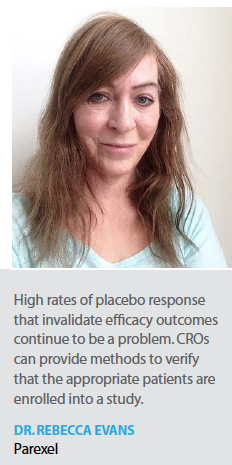 18%, longer than for non-CNS compounds, according to Tufts CSDD.
18%, longer than for non-CNS compounds, according to Tufts CSDD.
The challenges specific to the CNS area derive from the fact that the scientific understanding of CNS is not as advanced as some of the other physiological systems, says David Shoemaker, Ph.D., senior VP of R&D at Rho.
“The requirement for more scientific input on clinical endpoints is not as black and white in CNS as other diseases," he says.
“Many other clinical conditions have a larger spectrum of symptom improvement. For example, up until about three or four years ago, it was very difficult to develop an analgesic because there was no industry understanding on the requirements for the different classifications (e.g., acute, chronic, nociceptive and neuropathic pain) but the FDA helped this immensely with its 2014 guidance."
Experts say because there may not be discrete quantifiable biomarkers for CNS disease progression, researchers rely on clinician-rated or patient-rated scales for many outcome measures. Therefore, higher than expected placebo response rates have resulted in many failed CNS trials.
“In the majority of disorders and disease states within the category of CNS there remains minimal, or in some cases, no understanding as to the pathophysiology of the condition of interest," says Frederick Lewis DO, VP of neurosciences, scientific affairs at PRA Health Sciences. “This, of course, creates challenges for target identification, validation of such targets, as well as the eventual development of druggable compounds. Additionally, biomarkers or other objective measurable parameters to serve as endpoints in clinical trials are frequently absent. We are often working with very soft clinical outcome assessments, which are simply rating scales based largely on clinical judgment and prone to tremendous bias and variability."
Unique challenges start at the preclinical stage due to the complexity of the human brain and the limited possibility to study drug candidates in the relevant tissue environment, not even mentioning the aspect of blood-brain barrier, which created multiple issues in drug penetration, Dr. Baran says.
“This makes the development process longer, leads to higher failure rate, compared with other therapeutic areas, and is related to possibly greater safety risks for volunteers and patients, particularly at early phases," she says.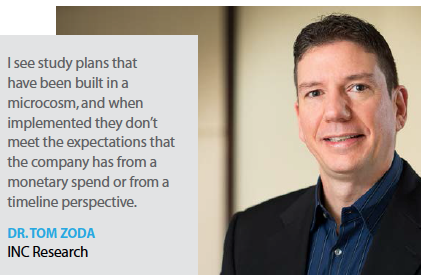
Experts say the key link among the vast majority of CNS indications is the difficulty in objective measurement of drug candidate efficacy. In both, psychiatric disorders and neurology multiple assessments are obtained either from patients or their legal guardians or physicians. Both sources can be considered highly variable and there is a great effort in the industry undertaken to increase objectivity of assessments.
A lot of CNS trials rely on subjective endpoints, which creates the potential for variability and “noise" in the data, says Tom Zoda, Ph.D., executive VP and general manager, clinical development CNS, INC Research.
“This is one of the reasons there are increased placebo responses in those types of studies," he says. “It is one of the confounding parts in designing studies, trying to correct that noise and keep the placebo response rates down. Some measurements are investigator-rated, some of the measurements are patient-rated, and sometimes they are family- or caregiver-rated. Each of these measurements introduces a level of variability in the data that need to be controlled."
Dr. Baran says another important point to consider is the expected growing importance of technology — and related research — in CNS.
“This is to be understood as development of new imaging devices, home-based diagnostics, such as home EEGs, studies on biomarkers of major CNS diseases, development of personalized treatment, innovative treatment modalities using patients’ own cells or tissues modified ex-vivo, further research on stem cells curing potential, testing bionic implants, and finding application for nanostructures-based methods, including micro-implants for sustained, localized drug release, or for modulation of local electric brain activity," she says. “All these innovations entail a need for outstanding flexibility and ability to embrace a rapidly evolving research paradigm, scientific mindset, and staying at least up to date with evolving regulations. Regulations will likely stay behind innovations, and it will be probably even more difficult for sponsors to identify correct regulatory pathways."
How CROs Can Help
Today, CROs working in CNS will have highly experienced physician specialists who are knowledgeable in the disease of interest and familiar with the challenges of operationalizing trials designed to test potential treatments, Dr. Lewis says.
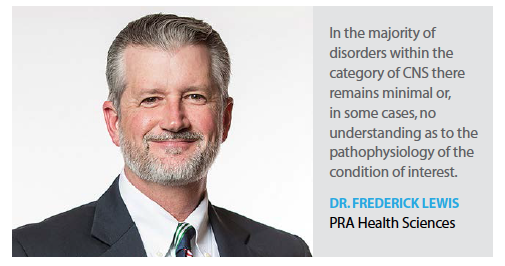 “Good CNS CROs have the country and site experience as well and have methodically collected extensive data on their experience with such countries and sites," he says. “The CRO will appreciate the value of PI and site training and close data monitoring. This expertise allows for a rapid seamless start up as well as the selection of experienced sites with a history of solid performance, which will minimize the variability between sites ultimately delivering a better signal to noise ratio."
“Good CNS CROs have the country and site experience as well and have methodically collected extensive data on their experience with such countries and sites," he says. “The CRO will appreciate the value of PI and site training and close data monitoring. This expertise allows for a rapid seamless start up as well as the selection of experienced sites with a history of solid performance, which will minimize the variability between sites ultimately delivering a better signal to noise ratio."
In later stage development, CROs can provide methods to verify that the appropriate patients are enrolled into the study, both in terms of reviewing the electronic data collected and source document verification of patient information, Dr. Evans says.
“Because trials are increasingly complex, data handling and analysis are critical," she says. “CROs are set up to handle complex data collection and analysis in a regulatory compliant manner."
Dr. Zoda says CROs can provide a reality check for clinical trial development.
“I see study plans that have been built in a microcosm, internally within the company, based on feedback from a number of KOLs — and there is nothing wrong with that, and while they may be well-versed in an indication, they aren’t always the clinicians on the front end of a clinical trial," he says. “The protocol may look great, but when implemented on a practical stage it doesn’t meet the expectations that a company has from a monetary spend, from a timeline, or output level."
Dr. Shoemaker says a new protocol model is needed.
“Protocols are typically written by a physician who may not have the same analytical tools as biostatisticians and they often pull the previous protocol off the shelf as a guide," he says. “The industry needs a process change and pharmaceutical companies are very slow to adapt innovation."
As a result, he says, protocols are longer than they need to be and they’re peppered with redundant information.
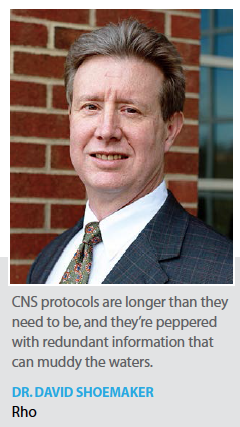 Experts agree that another challenge is making sure the right patients are selected for trials. This is especially true for CNS studies where symptoms may be relatively subjective and dependent on the patient who’s being interviewed.
Experts agree that another challenge is making sure the right patients are selected for trials. This is especially true for CNS studies where symptoms may be relatively subjective and dependent on the patient who’s being interviewed.
Third-party adjudication can screen out patients who might not be appropriate, says Daniel Burch, M.D., VP, therapeutic area head, neuroscience, global product development, at PPD.
“Over the last five to 10 years, there has been an acceptance in many of these disease areas, certainly in psychiatry, Alzheimer’s disease, and other degenerative diseases, that there needs to be independent adjudication of the patients," he says. “This might involve everything from reviewing protocol criteria, to evaluating a neuroimaging record or other data collected about the patient, to a live video interview with the patient."
PPD has a strategic relationship in psychiatry with an academic research organization called Clinical Trials Network & Institute (CTNI), which is associated with Massachusetts General Hospital. CTNI does telephone interviews with patients to discover things the patient might have been forgotten as part of the intake history, for example, use of a drug that might be prohibited in the trial or a real-world conflict that could prevent patients from coming in for doctor visits or adhering to the protocol.
Additionally, PPD has an exclusive license to develop and deliver a fully pre-specified partial enrichment design called SPCD that addresses the issue of placebo response variability, Dr. Burch says. This design, which has been used more than 20 times in CNS clinical studies, significantly reduces the risk of trial failure.
“In depression trials and chronic pain trials, the placebo response has increased over the last few decades, and this results in enrolling more patients in the trials," Dr. Burch says.
INC Research has a Clinical Surveillance Team as well. Six years ago, INC Research introduced a process to make sure the right patients are included in trials. This process goes beyond making sure the patients fit inclusion/exclusion criteria, and includes reviewing patients’ medical histories, laboratory values, other medications patients are taking, etc.
“The Clinical Surveillance Team was developed as a way to look at a patient in a much more holistic way, looking at the patient as a whole and making determinations in concert with the principal investigators about whether patients really fit the profile of the type of patient we want in the trial," Dr. Zoda says.
Dr. Zoda says the company has shown that without surveillance, patients who shouldn’t be in a trial may end up in the trial. But he points out that this is not used as adjudication but as a collaboration with investigators to ensure the best patients are enrolled in a trial.
“These patients are ones who can potentially increase the placebo response rate, or potentially increase the overall noise of the data by other mechanisms, whether medical or clinical that can eventually affect the data," he says.
INC Research has done this surveillance with about 40 trials, screening more than 22,000 patients. About 8% to 9% of patients who go through this review and are eventually screened failed out of the study and could have potentially skewed the data.
Dr. Baran says except for the large pharmaceutical firms with a proven track record in bringing CNS compounds to the market, it is practically impossible for a study sponsor to possess in-house expertise and capacity sufficient to conduct clinical trials.
“CROs manage dozens to hundreds of studies a year, and have not only their own experience but also the expertise of individual employees coming from within the CRO industry or pharma sector, enhancing the available pool of knowledge even further," he says. “This gives a CRO an undisputable competitive edge over study sponsors. The CRO knows healthcare systems, reimbursement, standards of care, local peculiarities, good and weak sites, good and weak investigators, local and global vendors, and can arrange for contracts with local diagnostic centers, all of which can support a CNS study." (PV)





